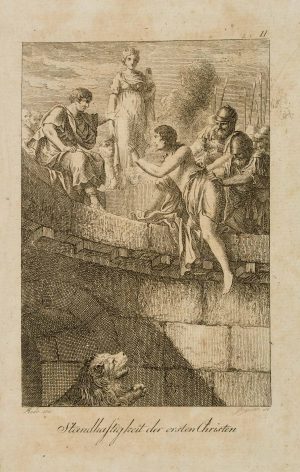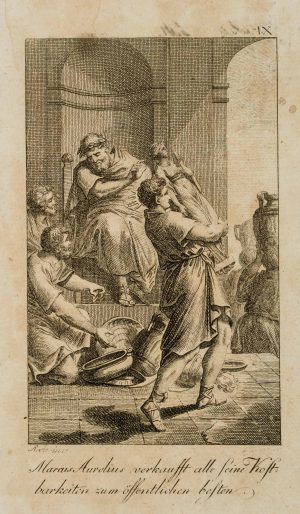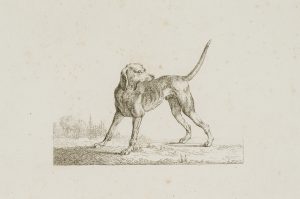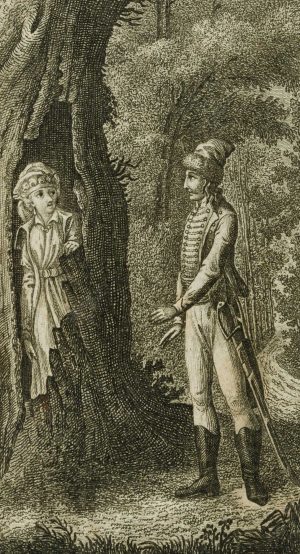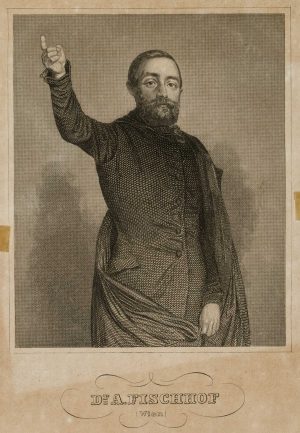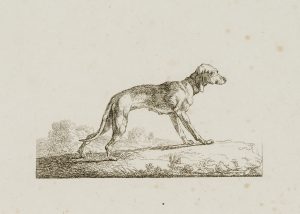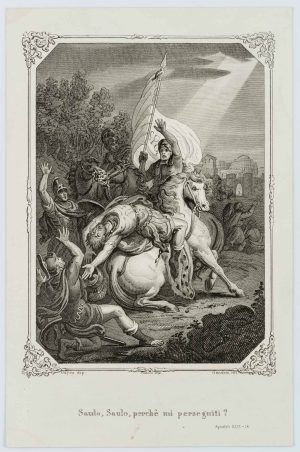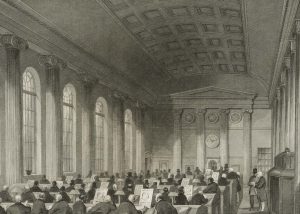Eduard Schuler (1805 Straßburg – 1882 Lichtenthal) nach Philipp Veit (1793 Berlin – 1877 Mainz), Einführung der Künste in Deutschland durch das Christentum, Fresko im Treppenhaus des Städel Museums, 19. Jahrhundert, Stahlstich
- Technik: Stahlstich auf Papier
- Bezeichnung: Unterhalb links und rechts signiert darunter beschriftet.
- Datierung: 19. Jahrhundert
- Beschreibung: Allegorische Darstellung der Künste. Mit einer allegorischen Frauengestalt in der Bildmitte, die Verkörperung der Religion. Die Figuren am rechten Bildrand werden vom heiligen Bonifatius durch eine Predigt bekehrt. Die Allegorien Germania und Italia stehen für die Einigkeit der Völker Deutschlands und Italiens.
- Schlagworte: Religiös, Deutschland, Romantik, 1800-1849
- Größe: 13,0 cm x 22,3 cm, Darstellung: 9,3 cm x 17,6 cm
- Zustand: Sehr guter Zustand. Der Blattrand ist fingerfleckig. Die Ecken sind teils bestoßen und knitterfaltig. Teils fleckig.
English Version:
Eduard Schuler (1805 Strasbourg – 1882 Lichtenthal) after Philipp Veit (1793 Berlin – 1877 Mainz), Introduction of the Arts in Germany by Christianity, fresco in the staircase of the Städel Museum, 19th century, Steel engraving
- Technique: Steel engraving on Paper
- Inscription: Signed below left and right and inscribed underneath.
- Date: 19th century
- Description: Allegorical representation of the arts. With an allegorical female figure in the centre of the picture, the embodiment of religion. The figures at the right edge of the picture are converted by St. Boniface through a sermon. The allegories Germania and Italia stand for the unity of the peoples of Germany and Italy.
- Keywords: 19th century, Romanticism, Religious, Germany,
- Size: 13,0 cm x 22,3 cm (5,1 x 8,8 in), Depiction: 9,3 cm x 17,6 cm (3,7 x 6,9 in)
- Condition: Very good condition. The sheet margin is fingerstained. The corners are partly bumped and creased. Partly stained.





